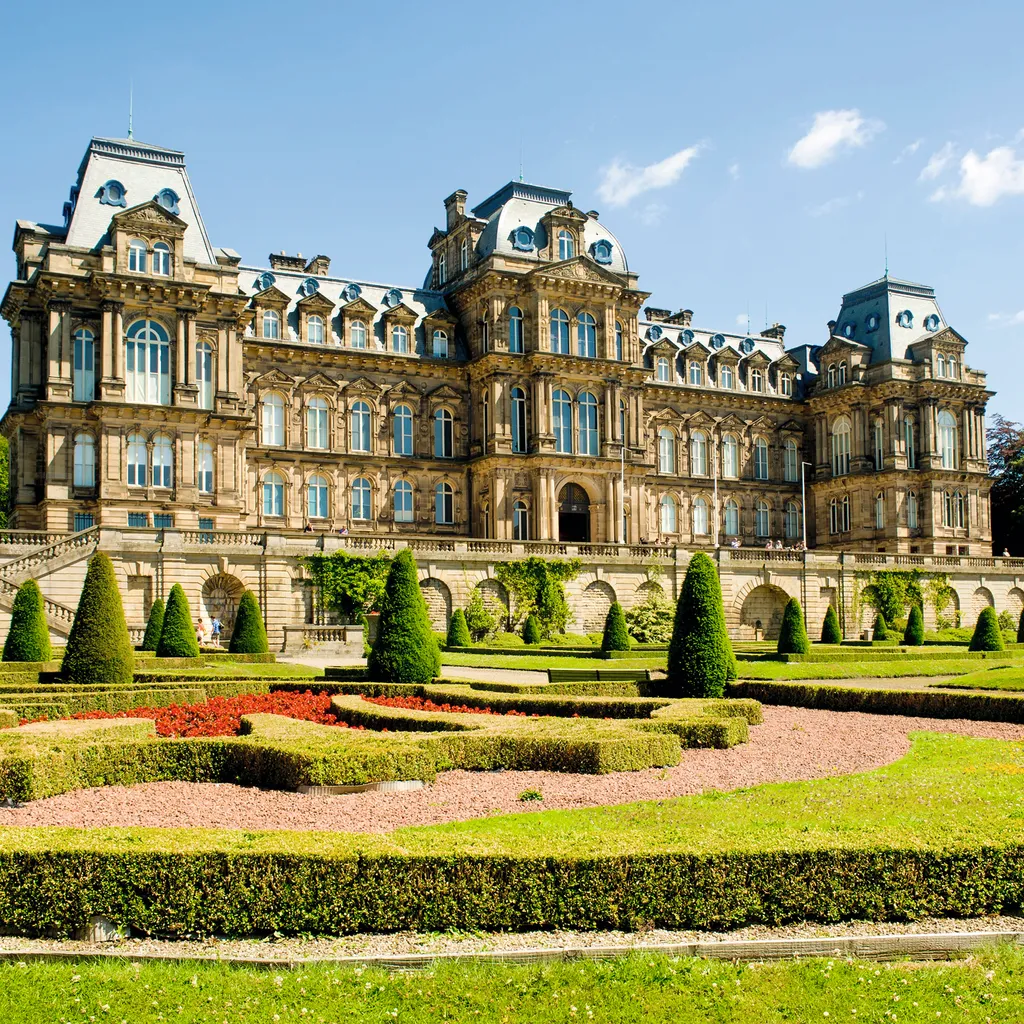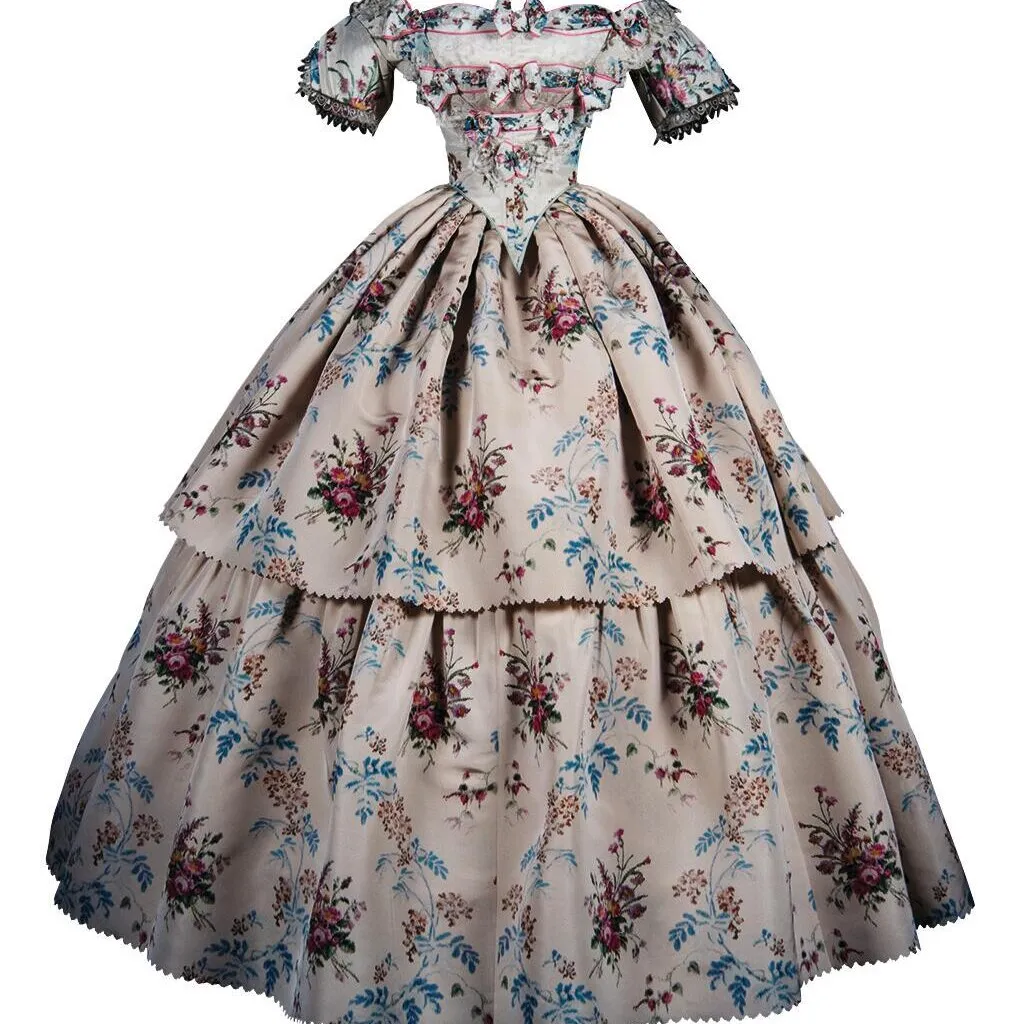What is your role at The Bowes Museum?
I’ve worked at The Bowes Museum for 40 years. I came from the Gallery of Costume in Manchester, but the quilts drew me in, and now I’d say I’m much more interested in textiles than fashion. It’s the layers of history you feel; the stories sandwiched between the top cover, the wadding and the backing.
It’s a sort of scrapbook. I always find when I’m looking at them – and dresses are the same – I’m inside them, looking at the seams, the labels. And I feel that’s what curators should do, in trying to tell the story. We’ve got a huge collection of about 30,000 items, including quilts, tapestries and embroideries, never mind the dress collection.

I get many offers a week of donations, and that’s a very big part of my job. In March 2021 I received a card in beautiful handwriting from Doreen, a reader of Homes & Antiques, who had read in ‘The Month’ about the quilt exhibition at The Bowes Museum. She had something she wanted me to solve – an immaculate North Country quilt from County Durham, only used by the owner once as a wedding quilt.
A Mr Peacock sold it to her 45 years ago, and he had been employed in a large country house, Wentworth Woodhouse. She thought it was dated to about 1775 and she wanted to give it to The Bowes Museum, so I went to see it and decided I’d really like it. It’s now the oldest quilt in the collection.
Doreen came up in August to see it on display in the glass cube in the textile gallery, adjacent to the quilt exhibition. It looks wonderful. For the museum it’s more than just a quilt – it’s a whole range of 18th-century printed cottons.

How do you decide which pieces to display?
There are a lot of questions you have to ask yourself when you’re acquiring things – whether we’ve got gaps in the collection, whether we are duplicating things and, most importantly, the provenance: who made it and where did they buy it? If it’s a dress, who wore it, and are there any photos? It’s a bit like being a detective – you’ve got to have some history. All museums have their own collecting policies: ours is fairly regional but, having said that, it can change.
What can be found at The Bowes Museum?
Thanks to some Art Fund money, we now collect 20th and 21st-century French couture in the spirit of Joséphine Bowes, our Parisian founder. Joséphine went to the best dressmakers in Paris – we’ve got her dressmaking bills – so it follows on nicely.
I felt that if we were collecting 21st-century costume, then there was an argument for collecting one or two contemporary quilt makers too, so I acquired some pieces by Leila Anderson and Pauline Burbidge. Since 2000 I’ve collected strippy quilts – the simplest form of quilt – when it was highlighted we didn’t have many, and also Sanderson Stars, stamped by Elizabeth Sanderson of Allenheads in the Pennines.
What is your favourite item at The Bowes Museum?
It’s hard to choose a favourite from thousands of items, but I’m very fond of the Empress Eugénie pieces we have in the collection. Eugénie was the wife of Napoleon III and the same age as Joséphine Bowes. The collector acquired them in the 1950s from her brother, who’d bought them from a Christie’s sale after Eugénie died in 1920.
The V&A subsequently borrowed Eugénie’s bodice of a ballgown with a reproduction skirt by Luca Costigliolo and had it in their ‘Opera’ exhibition, which went on a world tour – that was amazing.

Writing the catalogue foreword for our current quilt exhibition, I was reminded of how the collection has grown over the years. The trustees started to collect in the early 1900s and the first quilt came to us in 1930 – a beautiful little cot quilt of pure silk. I realised just how many wonderful opportunities I’ve had. It was so cathartic and I ended up writing a whole chapter. I’d forgotten so much that we’d done with quilts over the years, so it’s lovely to have a record.